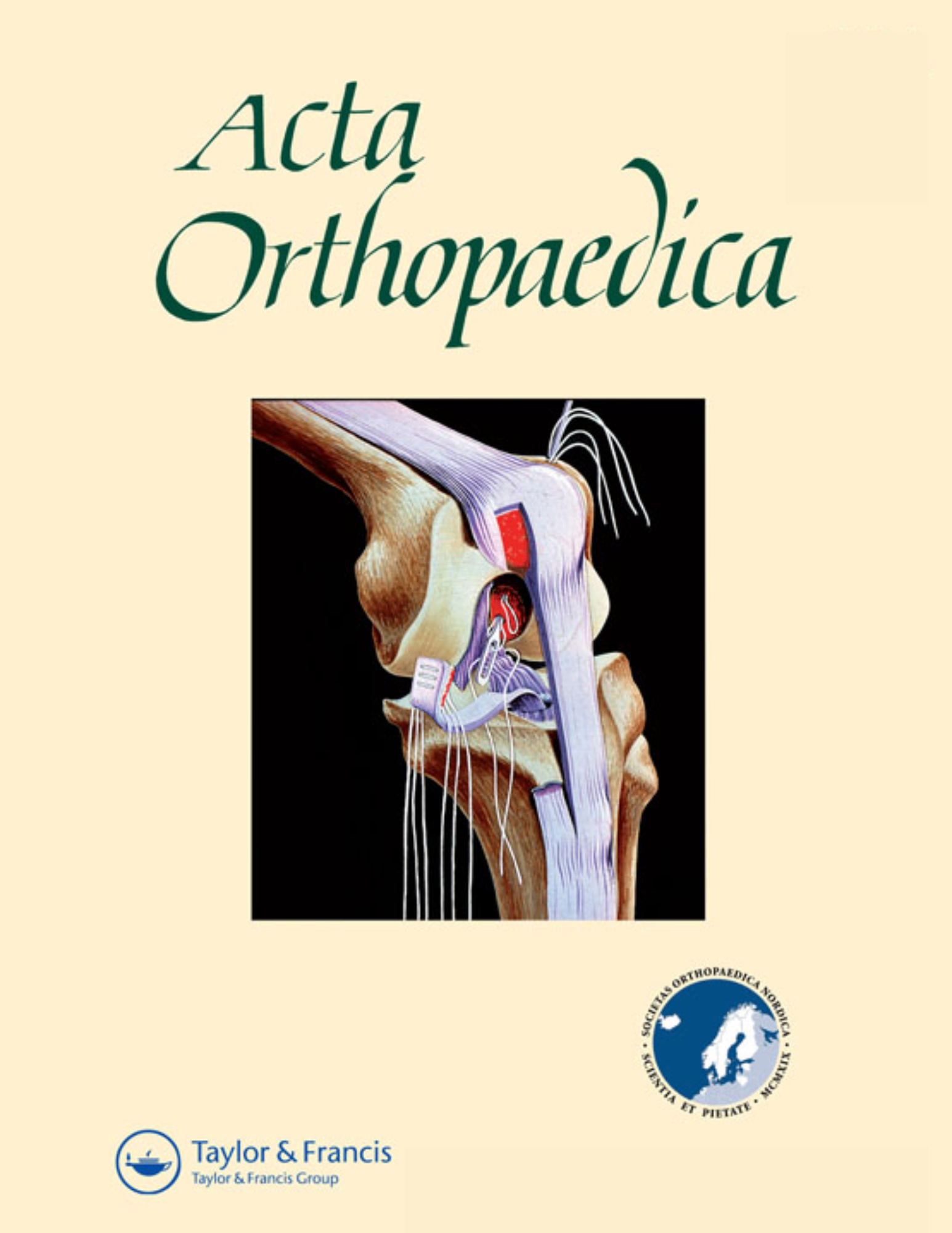
Trabecular metal tibial monoblock stable at 5 years despite high initial migration

Trabecular metal tibial monoblock stable at 5 years despite high initial migration
Continued stabilization of trabecular metal tibial monoblock total knee arthroplasty components at 5 years measured with radiostereometric analysis
Acta Orthop. 2012 Feb;83(1):36-40. doi: 10.3109/17453674.2011.645196. Epub 2011 Dec 29Synopsis
This study was conducted to examine the 5-year radiostereometric (RSA) results of the trabecular metal (TM) tibial monoblock component, based on a previous study with a follow-up time of 2 years. 70 patients with osteoarthritis were randomized and received either the trabecular metal tibial implant or the cemented component. Results indicated that stability was observed in the trabecular metal tibial implant up to 5 years despite high levels of initial migration observed in the previous study.
Was the allocation sequence adequately generated?
Was allocation adequately concealed?
Blinding Treatment Providers: Was knowledge of the allocated interventions adequately prevented?
Blinding Outcome Assessors: Was knowledge of the allocated interventions adequately prevented?
Blinding Patients: Was knowledge of the allocated interventions adequately prevented?
Was loss to follow-up (missing outcome data) infrequent?
Are reports of the study free of suggestion of selective outcome reporting?
Were outcomes objective, patient-important and assessed in a manner to limit bias (ie. duplicate assessors, Independent assessors)?
Was the sample size sufficiently large to assure a balance of prognosis and sufficiently large number of outcome events?
Was investigator expertise/experience with both treatment and control techniques likely the same (ie.were criteria for surgeon participation/expertise provided)?
Yes = 1
Uncertain = 0.5
Not Relevant = 0
No = 0
The Reporting Criteria Assessment evaluates the transparency with which authors report the methodological and trial characteristics of the trial within the publication. The assessment is divided into five categories which are presented below.
2/4
Randomization
2/4
Outcome Measurements
1/4
Inclusion / Exclusion
2/4
Therapy Description
4/4
Statistics
Detsky AS, Naylor CD, O'Rourke K, McGeer AJ, L'Abbé KA. J Clin Epidemiol. 1992;45:255-65
The Fragility Index is a tool that aids in the interpretation of significant findings, providing a measure of strength for a result. The Fragility Index represents the number of consecutive events that need to be added to a dichotomous outcome to make the finding no longer significant. A small number represents a weaker finding and a large number represents a stronger finding.
Why was this study needed now?
The potential for improved longevity from the use of uncemented implants have been explored due to recent improvement in biomaterials. In a previous paper by the same authors, the 2-year implant migration results of the trabecular metal tibial monoblock component were presented. However, a longer follow-up was necessary to determine whether the early stability of these implants was sustained. Thus, this study presented the 5-year longitudinal radiostereometric (RSA) results from the original cohort of patients randomized to receive either the uncemented Nexgen LPS TM monoblock tibial component or the cemented NexGen Option Stemmed tibial component.
What was the principal research question?
Did the trabecular metal tibial implant achieve solid fixation (despite high levels of initial migration) in comparison to the cemented component, assessed at 5 years?
What were the important findings?
- No differences were observed in the WOMAC scores between the groups at any follow-up point (P > 0.006).
- In the cemented group, the proportion of “at risk” components at 5 years was 2 of 18 (0.11, 95% CI: 0.03-0.33) and for the trabecular metal group it was 0 of 27 (95% CI: 0.0-0.13) (P = 0.2).
- There was no difference in maximum total point motion at the 5-year follow-up between both groups (P = 0.9); compared to the cemented group, the trabecular metal group had more subsidence (P = 0.001).
- 9 subjects in the trabecular metal group displayed very high migration in the first 6 months postoperatively (> 1.0 mm) at the 2-year follow-up; at 5 years, stability was still seen in all of these implants with an average change in maximum total point motion of 0.10 mm over the 3 years between follow-ups.
What should I remember most?
In the previous 2-year report by the authors, uncertainty was expressed concerning the long-term stability of the trabecular metal tibial implant because of the high initial migration seen in some cases. This study revealed that stability was observed in the trabecular metal tibial implant up to 5 years despite high levels of initial migration.
How will this affect the care of my patients?
The trabecular metal tibial implant appears to achieve solid fixation even though there were high levels of initial migration. However, continued implant surveillance data is required to evaluate the long-term stability of this implant for patients with osteoarthritis.
Learn about our AI Driven
High Impact Search Feature
Our AI driven High Impact metric calculates the impact an article will have by considering both the publishing journal and the content of the article itself. Built using the latest advances in natural language processing, OE High Impact predicts an article’s future number of citations better than impact factor alone.
Continue



 LOGIN
LOGIN

Join the Conversation
Please Login or Join to leave comments.